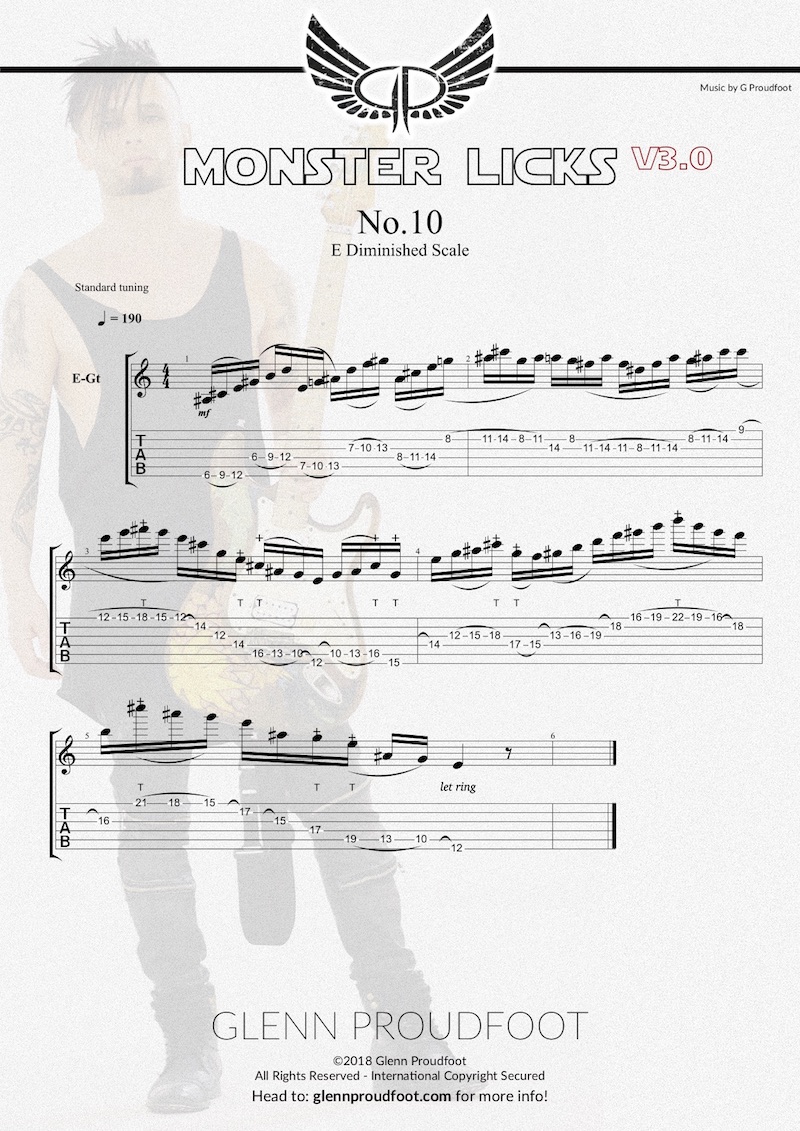Get an intense, 'outside' sound with this lick
Learn an interesting new lick - and give your fingers a workout - with this lesson
E Diminished Half Whole Scale
In this lick, I’m using the E Diminished scale or Diminished half whole scale. The notes in this scale are, E, F, G, G#, Bb, B, C# and D.
This scale is commonly used in jazz/blues or fusion-style playing, but can also be used in rock and more heavy styles when applied correctly.
A scale like this gives you that 'outside' sound that you hear players talk about. Obviously there are many different scales and tonalities that enable you to achieve that kind of sound, but I personally find that this scale creates the most intensity.
You'll notice that I use the Diminished 7th scale a lot in this example, as tonally it works incredibly well with the pentatonic scales. The Diminished whole half is basically the E Diminished 7 scale and the F Diminished 7 scale together.
This may sound a little confusing but if you analyze the notes a bit closer, you'll see what I'm talking about.

Example: If you play the E Diminished 7 scale in its entirety with two notes per string up and down the scale in the one position, then do the same but simply move up a half step and play the F Diminished 7 scale, then you have used all the notes in the E whole half Diminished!
This is a great and practical way to approach this, as if you're familiar with the shapes of the Diminished 7 scale then you can start to simply move the shapes up a half step and then back to get this 'outside' sound.
All the latest guitar news, interviews, lessons, reviews, deals and more, direct to your inbox!
The Lick
First, you need to make sure that your thumb is positioned behind the neck correctly to enable your fingers to be comfortable with the stretches. This is one of the main challenges with this kind of approach - the wide intervals can be very demanding, but the right thumb position can make them a lot easier!
You'll notice with this lick that I'm focused on keeping the fingerings as linear as possible, especially during the legato sections. This enables a much faster and smoother transition through the scale.
I like to keep the same fingerings as I would in the Diminished 7 scale and simply move the patterns up a half step, so although I view this entire scale as its own entity I approach it like I’m playing the E and the F versions of the Diminished 7 scale, as my fingers already know all of these shapes.
It's quite complex to get your head around if you've never explored this kind of sound before, but if you're familiar with the Diminished 7 shapes then hopefully this explanation should be an easier way to explore this sound.
If you're completely new to this then the first thing I would suggest is to learn the Diminished 7 shapes, as it will make all of this a lot easier to understand.
Follow Glenn Proudfoot on YouTube, Instagram, Facebook or visit his website, glennproudfoot.com.
